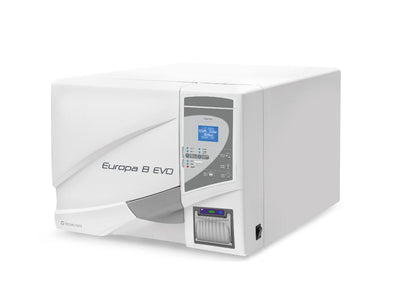Mediworld Subscription
Subscribe to Mediworld for product discounts, healthcare news, event updates and more!
Bestsellers
The Mediworld product range is extensive, so we have the most popular items for you below.

Load More
Nothing matches the criteria
Mediworld has been a regular supplier to the NHS for a number of decades.
We specialise in turnkey projects and are proudly UN approved.
2023 is our 50 year anniversary, and we are here to service you for many more.

We have different sizes and pack options of flat rolls of sterilisation by autoclave or ethylene oxide gas. We offer the round sterilizer drum for autoclave and hot air sterilizer made in stainless steel AISI 304.

Advanced safety and durability through user-friendly functions with top sterilisation standard.
An autoclave is a machine that helps to sterilize objects under high pressure to kill the harmful microorganisms like bacteria, viruses, fungi, and spores on the objects placed inside.
Aside from sterilization, it is used in the manufacturing of products like vulcanized rubber, pressure treated lumber, laminating and curing manufacturing materials.
Depending on the item that is being sterilised, the general standard for autoclaving liquids is not to fill more than 2/3 full and not seal the container.
You must ensure that only approved autoclave bags are used for the sterilisation and not filled above 75% of holding capacity.
The most common steam-sterilizing temperatures are 121°C or 250°F and 132°C or 270°F and it has to stay for at least 15 minutes and can be above depending on the equipment.
Autoclaves should be cleaned daily, monthly, and weekly. Cleaning protocols should be well observed to ensure harmful microorganisms are removed from the autoclave. Here are the basic things you need to clean your autoclave
• Autoclave cleaning solutions like C3 Sterilizer Chamber Cleaner
• Non-chlorinated/purified water like deionized water or bottled water
• A cotton rag or towel
• Cleaning pads
• Autoclave gloves
Steam autoclaves use very high temperatures to destroy the harmful microorganisms present in equipment and also use pressure over a specific period to disinfect the item. The temperature is expected to reach about 121 degrees Celsius for 15 minutes to properly sterilize.
While the dry air or dry heat sterilisers also use high temperatures they are expected to reach 170 degrees Celsius and retain that temperature for an hour. This type is mostly used while sterilising metal equipment to prevent rusting or dull metal edges.
The major advantage and difference between both autoclaves is that steam may damage unprotected instruments and can cause corrosion. Even after exposure to steam, the items must be thoroughly dried otherwise dampness can cause introduction of new harmful microorganisms.
You can sterilize surgical equipment like scalpels and forceps, and laboratory glassware like pipettes, test tubes, and so on. Pharmaceutical items including solids, liquids, and hollows can also be sterilized using an autoclave.
Mediworld Subscription
Subscribe to Mediworld for product discounts, healthcare news, event updates and more!
Would you like to save product on your wishlist?
Subscription completed successfully. The letter has been sent by mail.
User already subscribed
















